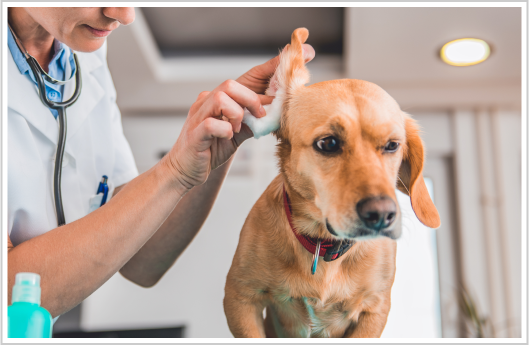
Causes of Pet Ear Infections
The ear canals in pets are very sensitive. Many animals scratch their ears or shake their heads to remove fluid and debris from their ear canal. However, in an attempt to alleviate the pain, the ears can become inflamed and may emit a foul odour.
Pet Ear Infections in Cats
Cat ear infections have the following causes:
- Ear mites (commonly happen in outdoor cats and kittens)
- Infected skin lining in the ear canal causes overproduction of earwax and the perfect environment for additional yeast and bacteria to form.
- Weakened immune system
- Environmental Irritants
- Allergies
- Excessive earwax
- Foreign substances or thick fur in the ear
- Incorrect ear cleaning
- Excessive yeast or bacteria growth
- Diabetes Mellitus
- Ruptured eardrums
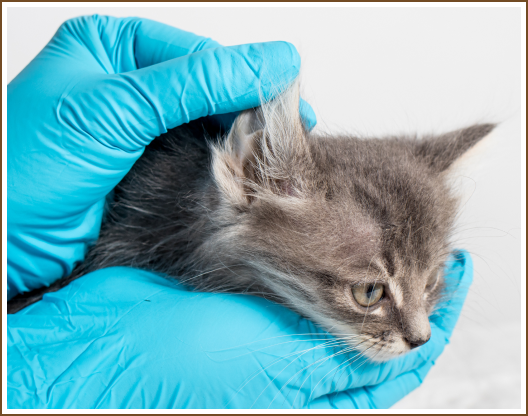
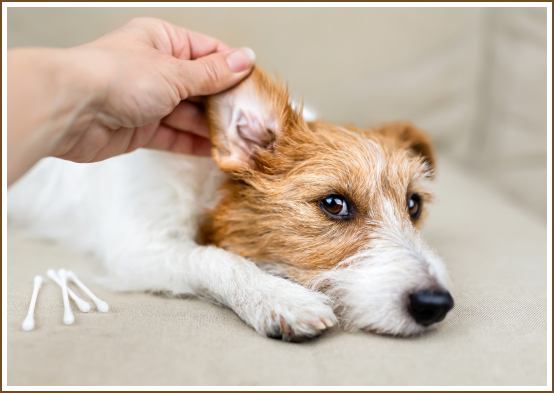
Pet Ear Infections in Dogs
Dogs with long, floppy ears are at risk of ear infections. Their ear canals are more vertical, making them susceptible to disruption by bacteria, ear mites, or yeast. Dog ear infections are commonly caused by the following:
- Bacteria:
Bacteria can cause ears to become inflamed or irritated from outside sources like allergies. It can also cause the ear lining to lose its protective skin barrier. - Yeast:
A dog yeast infection in the ear may occur when too much water gets into your dog’s ears and isn’t properly cleaned. They also happen when moisture builds up in the ears from excessive hair or hound breeds with floppy ears. - Allergies:
Allergies (environmental or food) can trigger itchy ears or skin.
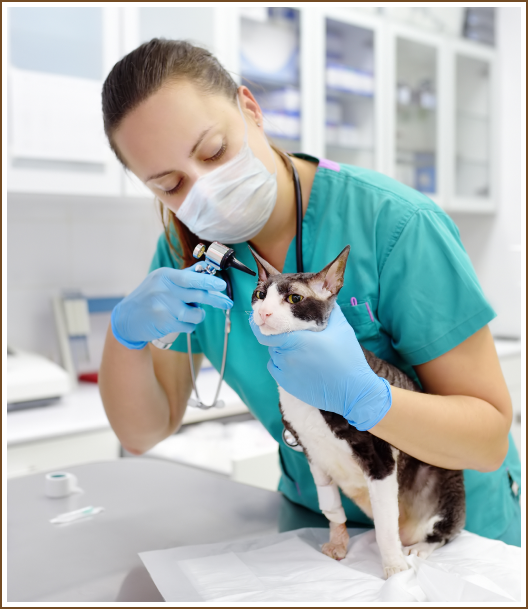
Symptoms of Pet Ear Infections
Signs of pet ear infections depend on the extent and severity of the infection. Some pets may show no outward symptoms, but other indicators may be present. Indications your pet may have an ear infection include:
- Reluctance to chew
- Pain when opening the mouth
- Shake the paw at the affected ear or the head
- Development of a head tilt to the infected ear’s side
- Leaning/falling/rolling to the side of the infection
- Altered balance (may walk in circles or have difficulties walking)
- Drooling
- Is unable to blink
- Dry eye in the unblinking eye
- Droopy eyelid, nostril or lip of the infected side
- Eye discharge
- Facial nerve paralysis
- Foul-smelling discharge and redness in the affected ear
- The outer ear becomes hard to the touch and thickened from inflammation
If your pet has an infection in both ears, it may have challenges remaining on its feet or swinging its head from side to side. Hearing may also be impaired on the affected side.
Treatments for Pet Ear Infections
Otits interna (middle ear infection) can be severe in pets. If they are unable to consume food or drink because of disorientation or nausea properly, they may require hospitalization. In this case, intravenous fluid therapy is necessary to prevent dehydration.
Pet Ear Infection Treatments for Cats
Your animal dermatologist may place medication directly in your cat’s ear, provide oral remedies, or both.
For balance issues, restrict your cat’s activity while it is treated to prevent injuries. Block all access to stairs, as they can fall. They may require hand-feeding, as reaching into a dish can create nausea.
Surgery is a last resort if the cat deteriorates despite receiving treatment or not responding to medicine. This treatment is for cats with infection in the surrounding bone by the ear, fluid buildup in the middle ear, or a malignant/benign mass from the eustachian tube or middle ear.
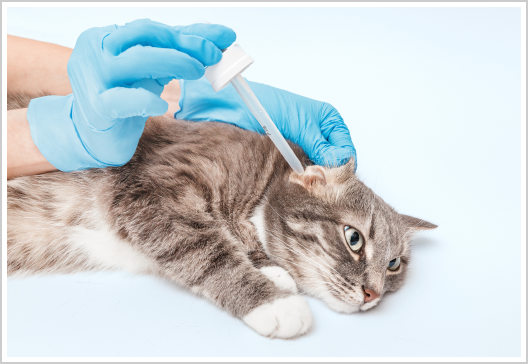
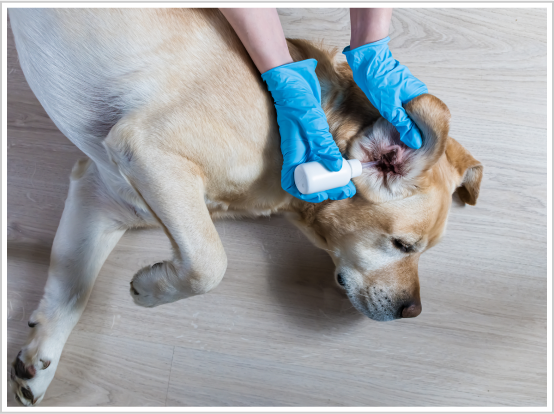
Pet Ear Infection Treatments for Dogs
Once your pet dermatologist correctly diagnoses the severity and scope of the ear infection, your dog will receive a thorough ear cleaning. This cleaning will remove ear wax, debris, and discharge. We may apply a topical medication or use medicated ear cleaners to tackle the infection.
Severe cases require oral antibiotics or anti-inflammatory medication.
Long-term care involves applying topical medications. Owners must follow their specialists instructions exactly to ensure treatment success. The process is made easier by:
- Gently massage medication into your dog’s affected area
- Ensuring the applicator is safely outside the ear when dispensing
- Keeping the dog relaxed using treats and affection
Be sure to finish the entire course of medication, even if your pet seems to be improving. Errors or lapses can prolong the sickness.
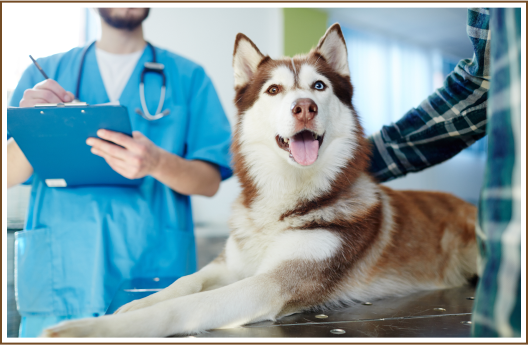
Preventing Pet Ear Infections
Properly cleaning the ear canal is the best way to manage infections in progress and is essential in maintaining your pet’s health. Cleaning the ears:
- Removes foreign objects and microbes causing ear infections
- It makes examining the ear canal easier
- Exposes and cleans the ear canal for topical applications
Excess moisture can also generate ear infections. If your pet’s ears are wet (from being outside or bathing), ensure you fully dry them. If your pet has chronic infections, discuss underlying issues with your vet.
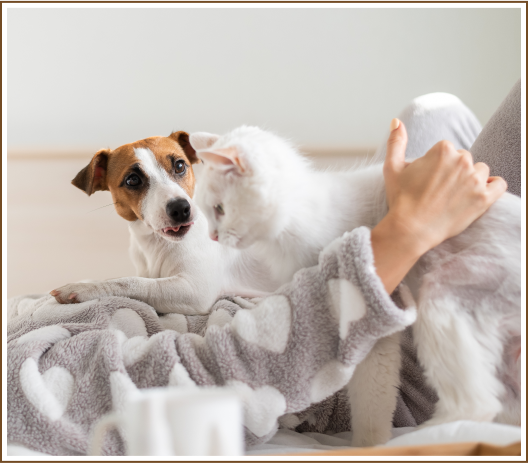
Keeping Your Pet’s Ears Clean & Clear of Infections
Using dermatologist-approved ear cleaners helps owners prevent pet ear infections. They remove dirt and debris that can cause infection. Likewise, keeping pets away from damp locations decreases the risk of ear infections.
One of the best preventative measures involves taking your pet to your veterinarian for regular checkups. It keeps their ears free of infection and maintains their overall health.
However, if your pet requires specialty care for ear infections, Animal Dermatology Specialists of Vancouver can help. We use extensive diagnostics to determine the exact cause of the ear infection and tailor an effective treatment plan.
Contact us at 604-558-3376 to book your free appointment or complete our online form.
